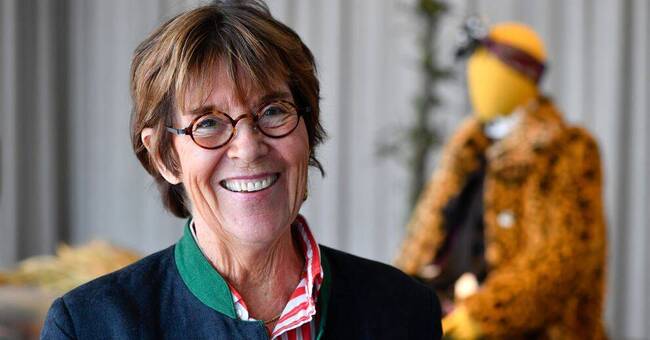Ingela Lind was a fixed star in the art sky: an art critic who could enthuse and at the same time provide pedagogical inputs to art, as well as a writer and host of Bildjournalen in the 1990s, with care for the words and an infectious laugh that went through the window.
A bundle of energy with strong drive, which for decades has always existed with its extensive outlook, through countless trips to important art exhibitions in the world and inner journeys in depth through art history.
Never became arrogant
Ingela Lind had the ability to take viewers and readers by the hand and share her deep and broad knowledge;
about contemporary art, modernism and all other isms that art history is full of.
Even though Ingela Lind was a learned intellectual in the best sense, she never became arrogant, but carried the knowledge and conveyed it easily to the audience.
It was therefore quite logical that she also needed to stretch out in longer essays, and her interest was particularly strong for Virginia Woolf and the Bloomsbury group;
a collection of writers, artists, historians and cultural figures active in Great Britain around the turn of the century 1900, and which Ingela Lind dealt with in two books: Take Freedom.
Bloomsbury, India and the Art of Living (2018) and Playing with Modernism (2008).
She praised the imagination
In the summer of 2018, Ingela Lind curated a large exhibition about the Bloomsbury group at the art gallery Artipelag outside Stockholm.
Thanks to many years of research, she managed to borrow lots of the group's production for the exhibition: visual arts, furniture, handicrafts and unique first editions of books - even Virginia Woolf's reading glasses, which Ingela was particularly happy and proud of.
In the literature program Babel, she told 2018 about her favorite novel by Woolf, Towards the lighthouse (1927).
In the novel, a large family with guests celebrates holidays in their summer house, and the conversations buzz in everyday life, during dinners and excursions.
The psychologist's psychological insight into the people's inner thoughts and feelings - high and low about each other - fascinated Ingela Lind, as did the seductively light tone that actually carries great spiritual knowledge.
It is easy to understand why this book appealed to Ingela, because she herself worked in the same spirit: praised the imagination, the feeling, the creation and the beauty - but at the same time was aware that even dark streaks fit into the human psyche.
There are important things to learn from the Bloomsbury group's trying, listening attitude;
current and urgently needed today as a counterweight to the harsh conversational climate on social media, said Ingela.
Met Joseph Beuys
When Ingela Lind in the program series and book Moderna SVT - Central konst (2002) was asked to talk about a favorite work of art from Moderna Museet's collections, she chose a work by the German artist Joseph Beuys: Hargrav V (Alps) from 1965. A so-called assembly consisting of what looks like mixed rubbish in a box.
But Ingela could, of course, put the box in its civilization-critical context, as could the author, "a classically strange artist" whom she called Beuys: World War II fighter pilot who was shot down and survived the damage from the crash thanks to Tatar nomads wrapping him in animal fat and blankets.
Ingela met Beuys in 1971 when he, as a professor at the Academy of Fine Arts in Düsseldorf, created chaos by admitting an unlimited number of students to the school according to his motto "every human being is an artist."
Ingela strongly remembered the shaman-like Beuys scent of fat - he often used lard and blankets in his art, probably a reference to the home remedy that saved his life.
"I'm a smeller, and Beuys had a strange, strong odor of fat," said Ingela, laughing fondly at the memory, explaining how the disgusting materials in Beuys' art can be interpreted as a healing and expelling force.
Such was Ingela Lind's great art as a critic, writer and curator: to always find the personal, down-to-earth and passionately sensual and develop a rich story with many interpretive possibilities, which created interest in viewers and readers to learn more.

